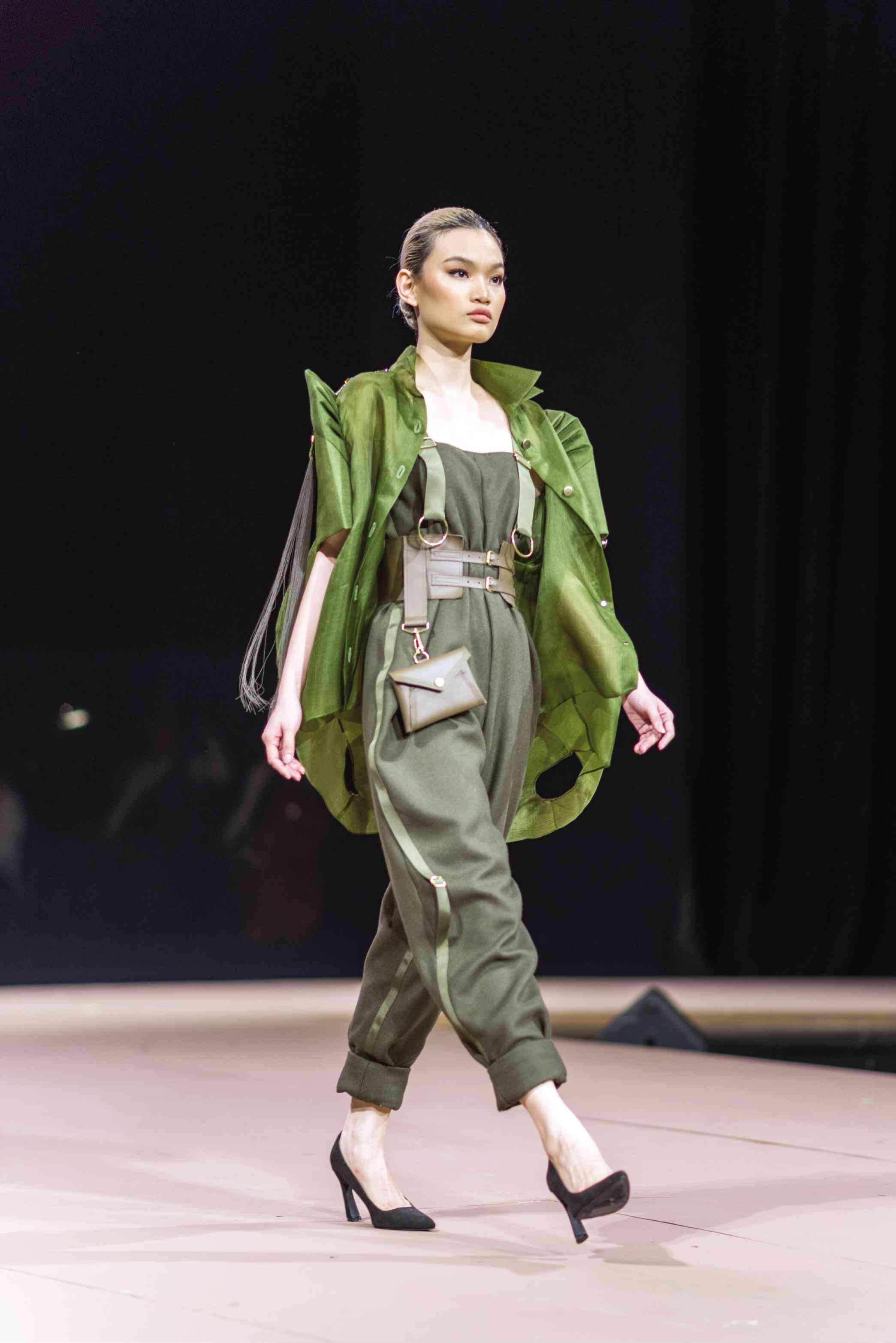
Thinking out of the box, designer Hannah Adrias of Pasay City turned the dressy and feminine terno into a utilitarian, military- inspired fashion. Think army green pantsuit with terno sleeves whose zippered pockets can store your mobile, keys or credit cards.
This unconventional approach to the terno helped Adrias win the gold medal in TernoCon 2020 last Sunday at Cultural Center of the Philippines, the mentorship program and fashion competition on modernizing our national dress.
TernoCon is one of the advocacies of the Bench fashion brand, which aims to promote Filipino culture and revive traditions in the mainstream lifestyle.
Unlike the first edition where the entries of the terno and the balintawak, its cocktail dress version, were more traditional in silhouette and injected with local references, TernoCon 2020 aimed to deconstruct the terno.
This batch of 12 designers from all over the Philippines and their mentors presented collections that bravely played with contrasting textures, fabric manipulations and reimagined butterfly sleeves.
Adrias created a silk terno jumpsuit with dangling straps adorned with hardware and military epaulets that extended to the terno sleeves. The second outfit was an oversized jacket with drop terno sleeves worn over mini dress, handwoven with straps from backpacks and decorated with beadwork.
The third was a terno top whose butterfly sleeves had utilitarian pockets and was paired with paper bag waist pants.
An alumni of Slim’s School of Fashion and Arts, Adrias practically sewed her three entries without any assistant.
Butterfly emerging
Silver prize winner Jayson “Jaggy” Glarino of General Santos City, has developed a reputation for his avant-garde collections. Trained at London’s Central Saint Martins, he told Inquirer that his collection was inspired by the delicacy of the piña inner wear, the butterfly emerging from its cocoon, and Dior’s New Look of cinched waist and full skirt.
To create architectural and layered silhouettes, the fabrics were draped and manipulated on a mannequin.
Glarino’s sleeves were tucked and slightly flipped out, like wings. The bell shape of the skirts was highlighted by strips of protruding crinoline.
For texture, Glarino mixed high and low fabrics such as basic organza with silk organdy and Chantilly lace as an overlay or as pleats.
Dinnes Obusan from Camarines Sur presented the terno in its timeless silhouette, rendered in sophisticated black. He individually sewed strands of stretch material and velour, highlighted with bugle beads to make his own fabric.
Another modern take was the cropped terno top paired with sexy cigarette pants.
This year’s batch was more experimental, while maintaining respect for the classic sleeves.
Looking at Asian and European art, Renz Reyes highlighted embroidery, beadwork and patchwork from brocades used in cheongsams, jacquards and upholstery.
The three-piece earth-toned collection consisted of a voluminous patchwork top with embroidered pants, a tent dress of contrasting stitchwork, and beaded jacket with exaggerated hips, paired with metallic jacquard. Reyes observed the traditional construction of the terno sleeve. “It’s an art in itself,” he says.
Gavin Ruffy imagined how the modern woman would move. “She is not demure. I made the clothes structured and showed some skin,” he said. Ruffy used silk gazar as base, and layered it with organza patterns and bugle beads for extra shine. “I incorporated the classic terno sleeves into contemporary clothing.”
Geometric shapes
June Samson Pugat took an esoteric theme, Sukgisan, the ancient Filipino term for geometry. He sourced pastel-colored cocoon silk from Taiwan and cut the clothes into geometric shapes—triangles and lines— and made them move with the body.
“I used gradient custom-dyed cutouts of cocoon silk that were resewn on the garment bases to create patterns resembling ethnic weaves. The terno sleeves were also hand-dyed.”
Abdul Dianalan’s collection was his tribute to the streamlined design of the Trans World Airline Terminal. “It is associated with the Space Age aesthetics,” he said.
The silhouette of his clothes took after the dome-shaped building. He used neoprene for the futuristic look, with crinoline for the accent armor, corset and his “cage” terno. He treated the terno sleeve as an indispensable element.
C.J. Martin’s “balik tanaw” riffed on the mountains and fields of his province, Nueva Vizcaya. Made with rich materials like organza, wool and silk gazar, the collection—a blue and black culotte dress, a black top and skirt with orange details and a teal blue long dress over a shorter skirt—was unified by the lines on the clothes that were abstractions of rice paddies.
Seasoned designers noted that Windell Madis’ flapper terno dresses were neatly constructed. He attributed the clean work to his employer, designer Jojie Lloren. The 1920s-inspired dresses, which featured 1920s Art Deco-inspired cutouts, were in fluid, pastel-colored silk chiffon. Madis turned the terno sleeves into a winged, tapered version.
A scuba-diver, Krizia Jimenez took photos of marine life and had them printed on duchesse satin and taffeta. She focused on digital printing, distortion and multiplication of images to suggest the “mixture of nature and technology.”
The images also promoted the preservation of endangered marine species.
She added,”I wanted the collection to be eclectic. I played with the pañuelo by adding a hoodie to make it contemporary.”
Ben Chan, chair and CEO of lifestyle company Suyen Corp., reiterated the company’s commitment to championing the terno.
“We at Bench are fully committed to the discovery and development of Filipino design and talent. Our task is far from over. There is much more to be done.”

